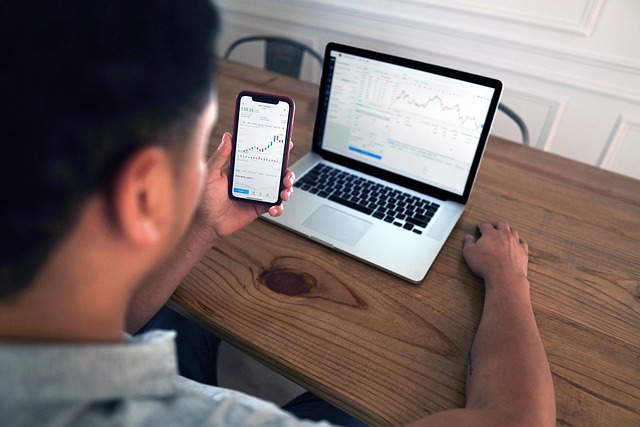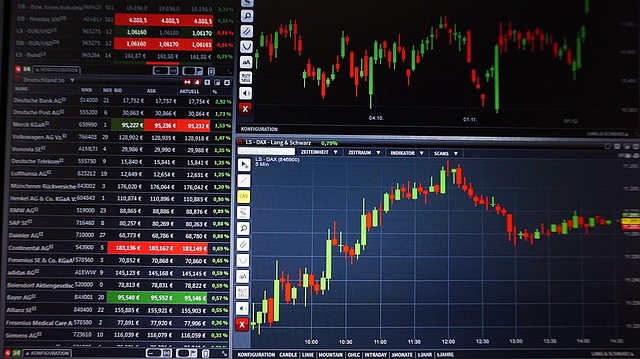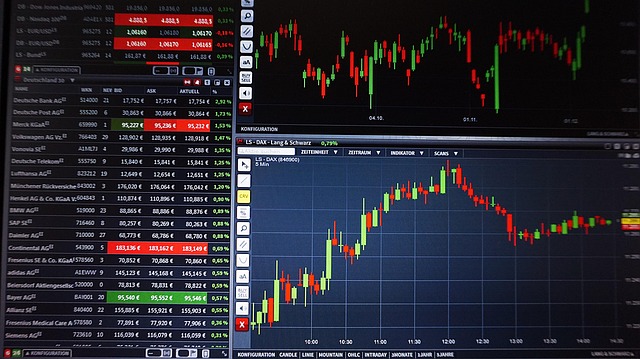Forex Trading Bot Review 2025: Top Strategies and Honest Evaluation
Author: Jameson Richman Expert
Published On: 2025-11-08
Prepared by Jameson Richman and our team of experts with over a decade of experience in cryptocurrency and digital asset analysis. Learn more about us.
Forex trading bot review — this article gives a comprehensive, practical, and SEO-optimized evaluation of automated forex systems in 2025. You’ll learn what forex bots are, how they work, how to evaluate them step-by-step, the key metrics to watch (backtests, drawdowns, slippage, execution), common red flags, and actionable testing processes you can use today. It also includes trusted resources, platform suggestions, and recommended reading to help you separate credible systems from marketing hype.

What is a Forex Trading Bot?
A forex trading bot (also called an automated trading system, Expert Advisor (EA) on MetaTrader platforms, or simply a robot) is software that executes orders in foreign exchange markets based on pre-defined rules and algorithms. Bots can range from simple rule-based systems (e.g., moving average crossovers) to complex machine-learning models that adapt to changing market conditions.
For a broad overview of the foreign exchange market, see the Wikipedia article on the foreign exchange market.
Why Traders Use Bots
- Emotion-free execution: Bots execute trades without fear, greed, or hesitation.
- 24/7 monitoring: Especially useful for cross-timezone markets and crypto–fx hybrid strategies.
- High-frequency or systematic strategies: Bots can implement scalping, grid, or arbitrage strategies that require fast execution.
- Repeatability and backtesting: Automated systems allow rigorous historical testing and consistent rule application.
However, automation is not a guarantee of profitability. Understanding mechanics, market conditions, and operational risks is critical.
Types of Forex Trading Bots
Understanding the bot category is the first step in any forex trading bot review:
- Rule-based Expert Advisors (EAs): Deterministic systems deployed in MetaTrader 4/5 using MQL. Good for clear, repeatable strategies.
- Market-making and liquidity bots: Provide buy and sell liquidity; sensitive to commissions and slippage.
- Grid and martingale bots: Open offsetting positions and scale; can be profitable in range markets but carry catastrophic tail risk.
- Trend-following bots: Long-term orientation, often lower frequency and more robust across regimes.
- Machine learning / AI-driven bots: Use dynamic models; require careful validation to avoid overfitting.
- Copy trading and PAMM providers: Not strictly bots but automated replication of a manager’s trades.
- Crypto-exchange bots: Many traders use bots for forex-like crypto pairs. If you operate in crypto, consider exchange reliability and fees — see analysis on whether Binance is a good platform in 2025 for context.

How Forex Bots Work: Data, Signals, Execution
Bots follow a pipeline: data → signal generation → risk sizing → order execution → monitoring.
- Data: Price (OHLC), tick data, order book, economic calendar, and volume. Volume and liquidity are critical; learn why trading volume matters in this comprehensive guide to market liquidity, price confirmation, and strategic trading.
- Signal generation: Indicators, statistical rules, or ML models produce buy/sell signals.
- Risk management & sizing: Position sizing, stop-loss, take-profit, correlation controls, and maximum drawdown thresholds.
- Execution: The bot sends orders via broker APIs or through trading platforms (e.g., MetaTrader). Execution speed, slippage, and order type handling (market vs limit) matter.
- Monitoring & fail-safes: Heartbeat monitoring, kill-switches, and position audits to avoid runaway losses.
Key Evaluation Criteria for a Forex Trading Bot
When conducting a formal forex trading bot review, evaluate these categories thoroughly:
- Strategy transparency: Does the vendor describe the underlying logic, edge, and market regime suitability?
- Backtesting methodology: Was tick-level or at least 1-minute data used? Were spread and commission included? Was slippage modeled?
- Out-of-sample and walk-forward testing: Are there forward tests on unseen data? Has the bot been forward-tested in demo/living accounts?
- Live track record: Are there verified live accounts (Myfxbook, FX Blue) with broker statements? Prefer independent verification over vendor screenshots.
- Risk and drawdown metrics: Maximum drawdown (MDD), daily/monthly drawdown, recovery factor, and worst-case scenarios. Look at peak-to-valley declines, not just return.
- Sharpe/Sortino & profit factor: Understand risk-adjusted performance; profit factor > 1.5 with reasonable drawdown is preferable.
- Trade frequency & holding times: Scalpers vs swing bots have different infrastructure and cost sensitivities.
- Transparency of costs: Commission, swap, slippage, VPS cost, and software fees must be disclosed.
- Broker compatibility & restrictions: Check order types, minimum lot sizes, hedging rules, and FIFO regulations for your chosen broker.
- Support, updates & community: Regular updates, changelogs, and an active user base improve long-term viability.
- Security & code access: Is source code available? Are API keys handled securely? Can you run locally or does it require cloud access?
- Robustness to slippage & latency: Test the bot across different latency environments and on brokers with variable spreads.
Performance Metrics to Inspect
- Net profit and annualized return
- Maximum drawdown (absolute and percentage)
- Profit factor (gross profit / gross loss)
- Win rate and average win / average loss
- Sharpe ratio and Sortino ratio
- Expectancy per trade
- Average trades per day/month
- Correlation to major FX pairs or indices
Step-by-Step Testing Plan — How to Review Any Bot Properly
- Read the documentation: Understand the strategy, inputs, and constraints.
- Backtest with high-quality data: Use tick or 1-minute data with realistic spreads and commissions for at least 5–10 years where possible.
- Perform walk-forward validation: Use rolling in-sample/out-of-sample splits to detect overfitting.
- Parameter sensitivity analysis: Test different parameter sets to check for robustness. Bots that only work under a narrow parameter set are fragile.
- Run on a demo account: Deploy on a demo for at least 3 months under live market conditions.
- Start small in live: Use a small allocation and monitor closely for slippage, requotes, and execution differences from the backtest.
- Ongoing monitoring and metrics: Track daily PnL, drawdown, and occurrence of edge cases (e.g., high-impact news events).
- Kill-switch and contingency: Have predefined abort rules (e.g., >X% drawdown in 24h) and manual override.

Common Pitfalls and Red Flags in Reviews
- Unverified performance screenshots: Vendor screenshots without independent verification are suspect.
- Curve-fitted backtests: Over-optimized parameter sets that produce spectacular historical results but fail in live trading.
- No out-of-sample testing: Only in-sample performance is presented.
- High leverage without risk controls: Systems that rely on excessive leverage or martingale are risky.
- Vague strategy descriptions: Lack of clarity about market regimes where the bot performs or fails.
- No mention of slippage/commission: Unrealistic backtests often ignore real-world friction.
Case Study — How to Score a Bot (Example)
Use a simple scoring rubric (0–5) across 10 categories: transparency, backtesting quality, forward testing, live verification, drawdown, risk management, cost transparency, support, platform compatibility, and security. Sum scores to get a 0–50 rating. Example observations that matter:
- Backtesting with tick data and realistic spreads: +5
- Verified live account with continuous history: +5
- Maximum drawdown 8% with steady equity curve: +4
- Profit factor 1.6 and Sharpe 1.2: +3
- Vendor forbids code inspection and uses closed cloud only: -2
This structured approach removes emotion and provides repeatable comparisons across bots.
Top Platforms and Tools for Building and Running Bots
Popular choices include:
- MetaTrader 4/5 (MT4/MT5): The most common retail platform for forex EAs. MQL-based. Lots of community solutions via the MQL5 Market.
- cTrader / cAlgo: Professional-grade with C# scripting and advanced order types.
- Quant platforms: QuantConnect, Quantopian (formerly) and others for institutional-style development.
- Open-source options: Freqtrade (crypto), Backtrader, Lean engine (QuantConnect) for custom strategies.
- Broker APIs and bridges: Direct REST/WebSocket APIs for low-latency execution, or FIX for institutional setups.
If you plan to run bots on crypto exchanges or want cross-asset strategies, registering accounts on major exchanges can be useful. Popular exchange options include Binance (register here), MEXC (register here), Bitget (register here), and Bybit (register here). If you are researching whether Binance is a good trading platform in 2025, review this in-depth analysis.

Broker and Exchange Recommendations (Practical Notes)
Choice of broker affects execution, slippage, and spreads. For FX-focused bots, use regulated FX brokers with good liquidity (IG, OANDA, Forex.com, etc.). For crypto bots, exchanges like Binance, MEXC, Bitget, and Bybit are common choices, but be sure to consider custody, regulatory status, and market liquidity — read a thorough trading robots reviews guide for 2025 to compare providers and platforms.
Note: Crypto exchanges introduce additional factors (funding, fragmented liquidity across pairs, concentrated order books) that are discussed in specialist resources and can influence bot viability. For cross-market ideas and potential correlation analysis (for example, crypto-forex pairs that interact), review this XRP 2030 price prediction and broader market outlook.
Operational and Security Best Practices
- Use a dedicated VPS: Low latency, high uptime VPS providers (located near your broker’s servers) reduce requotes and disconnections.
- API key security: Use read-only keys when testing, restrict IPs, and avoid withdrawal permissions for bot keys.
- Two-factor authentication (2FA): Enforce on all exchange/broker accounts.
- Logging and notifications: Build robust logs, trade receipts, and SMS/email alerts on critical events.
- Fail-safes and kill-switches: Auto-stop trading when drawdown thresholds or margin levels are hit.
Regulatory and Legal Considerations
Regulation varies by jurisdiction. U.S. traders must be mindful of CFTC and NFA rules; consult official regulators like the CFTC and NFA pages. In Europe, local regulators and MiFID rules apply. Always confirm compliance with tax reporting, and ensure your broker is regulated for your jurisdiction. If you are uncertain about legal obligations, consult a licensed attorney or tax professional.

How to Spot Overfitting and Poor Statistical Practice
Overfitting occurs when a model is tuned too aggressively to historical data. Signs include:
- Performance collapses in out-of-sample tests
- Highly sensitive performance metrics to small parameter changes
- Unrealistic consistency across all market regimes
Use cross-validation, walk-forward analysis, and conservative performance adjustments (e.g., shrinkage, transaction cost buffers) to reduce the risk of overfitting.
Practical Example — Reviewing a Hypothetical EA
Imagine an EA claims 30% annual returns with a max drawdown of 5% over 3 years. Steps to verify:
- Request verified Myfxbook/FxBlue statements or broker-statement exports.
- Re-run the backtest using tick data with your broker’s spreads and swap fees.
- Run a walk-forward test: 1 year in-sample, 6 months out-of-sample rolling window for the full 3-year period.
- Perform Monte Carlo simulations on trade sequences to estimate probable future drawdowns and time-to-recovery.
- Deploy on a demo for 3 months, then a small live account with strict monitoring.
Combining Bots with Manual Oversight — Hybrid Approaches
Many professional traders use hybrid systems: bots execute routine rules while humans intervene for macro events or regime shifts. Best practices include disabling automation around scheduled high-impact economic news or employing volatility filters that pause the bot during large spread widening.

Common Bot Strategies and Where They Work Best
- Scalping: Works in high-liquidity, low-spread environments and demands near-zero latency.
- Trend-following: Better in trending environments and requires tolerance for long drawdowns.
- Grid trading: Best in ranging markets but risky if a strong trend develops.
- Mean reversion: Requires precise entry signals and quick exits to avoid trend exposure.
- Arbitrage: Needs fragmented market access and very low latency; increasingly difficult for retail traders.
Resources, Further Reading, and Tools
- Foreign exchange market — Wikipedia
- Algorithmic trading — Investopedia
- MetaTrader 4 — Official
- Related specialized reviews and analysis: read a comprehensive Trading Robots Reviews 2025 — Comprehensive Guide for additional comparisons.
- For exchange-specific platform choice and user experience, consider the detailed piece Is Binance a Good Trading Platform in 2025 — Pros & Cons.
- When analyzing volume and liquidity impacts on bot execution, refer to What is Trading Volume and Why it Matters.
- For asset-specific cross-market perspectives and long-term views, see the crypto outlook such as the XRP 2030 Price Prediction — In-depth Analysis.
Recommended Platforms for Crypto Bot Users (Referral Links)
If you are expanding to crypto or building cross-asset bots, the following platforms are frequently used by bot developers and market makers. Registering through the links below will get you started quickly (review each exchange’s fee schedule and API docs):
- Binance registration: Register on Binance
- MEXC registration: Register on MEXC
- Bitget registration: Register on Bitget
- Bybit registration: Register on Bybit

Checklist — Final Steps Before You Deploy Capital
- Verify live track record via independent services (Myfxbook, FxBlue).
- Re-run backtests with your broker’s cost assumptions.
- Conduct walk-forward validation and Monte Carlo analysis.
- Run demo/live small-size tests for a minimum of 3 months.
- Set strict risk limits and automation kill-switches.
- Enforce operational security: VPS, 2FA, IP restrictions.
- Document and monitor all changes, updates, and anomalies.
Conclusion — Is a Forex Trading Bot Right for You?
Automated trading can be a powerful tool when used with discipline, rigorous testing, and realistic expectations. A credible forex trading bot review should look beyond headline returns and examine methodology, verification, risk, and operational readiness. Use the scoring approach described above, validate everything with real data, and start small. Whether you’re building an MT4 Expert Advisor or a cross-asset crypto/FX bot, sound statistics and robust execution will determine long-term results.
Disclaimer: This article is educational and not financial advice. Automated systems carry risk, and past performance does not guarantee future results. Consult a qualified financial professional for personalized advice.